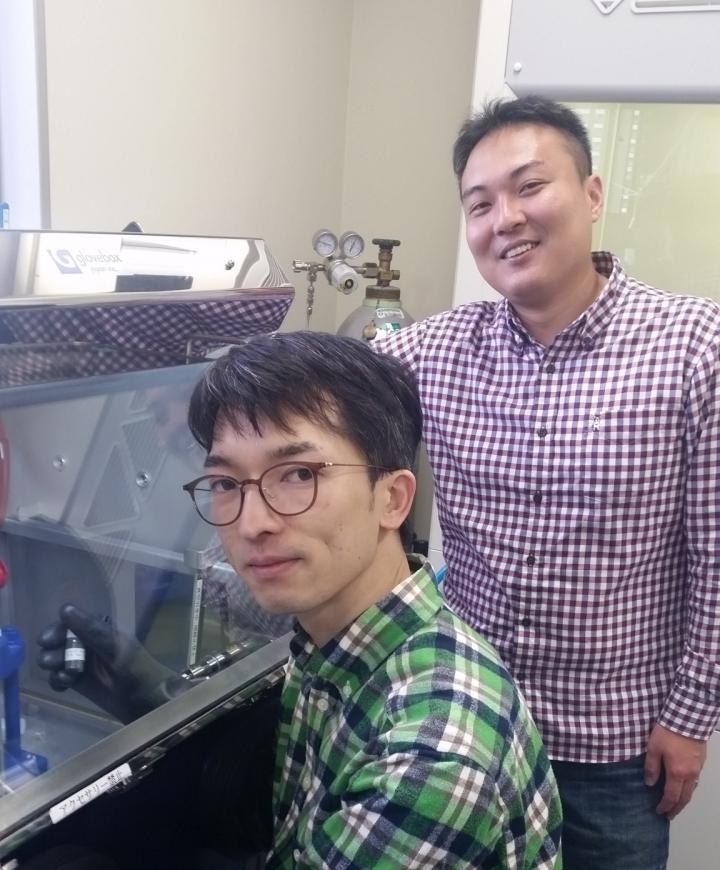Nov 9 2017
The layered superconducting material system is defined by a crystal structure wherein a Na layer (the spacer layer) and a SnAs layer (in which As and Sn are two-dimensionally bonded to develop superconductivity) are alternately laminated. Since this layered structure is analogous to that of an iron- or cuprate-based high-temperature (high-Tc) superconductor, SnAs-based layered materials are likely to have superconductivity due to the unusual pairing mechanism.
 The scientists of Tokyo Metropolitan University are always working on the creation and theoretical clarification of new superconducting materials. Yosuke Goto, Project Researcher (left), and Associate Professor Yoshikazu Mizuguchi discovered that SnAs-based layered compounds develop superconductivity. (Credit:Yoshikazu Mizuguchi)
The scientists of Tokyo Metropolitan University are always working on the creation and theoretical clarification of new superconducting materials. Yosuke Goto, Project Researcher (left), and Associate Professor Yoshikazu Mizuguchi discovered that SnAs-based layered compounds develop superconductivity. (Credit:Yoshikazu Mizuguchi)
The research team of Yosuke GOTO (Project Researcher) and Yoshikazu MIZUGUCHI (Associate Professor) is focused on the discovery of two-dimensional (2D) layered structures — different kinds of layers can be laminated to design a wide range of materials. For instance, in 2012, the same research team also discovered new layered superconducting material systems, LaO1-xFxBiS2 and Bi4O4S3, that are based on sulfur (S) and bismuth (Bi), respectively. In addition to this the 2D crystal structure creates a low-dimensional electronic state which scientists are actively exploring unusual quantum phenomena, for example high-temperature superconductivity.
With regards to NaSn2As2, Mizuguchi emphasizes that while the transition temperature of 1.3 K (-271.85 °C) is not really high, it is expected that novel materials will be created based on the SnAs conductive layer, thus explaining the mechanisms underlying the increased transition temperature and those that contribute to high-transition-temperature superconductivity.
The Research Center for Superconductivity Science and Engineering represented by Professor Takashi HOTTA was established at Tokyo Metropolitan University in 2016; Yoshikazu MIZUGUCHI is a faculty member in this Research Center. The main goal of the Research Center is to become a major hub of superconductivity research in Japan, and it is planning to accomplish this by encouraging the discovery of innovative quantum critical phenomena, especially superconductivity by preparing single pure crystals, determining their physical properties using advanced experimental techniques, and promoting theoretical studies on unusual superconductivity.
The work was funded by the Japan Science and Technology Agency and Grants-in-Aid for Scientific Research of the Japan Society for the Promotion of Science. The manuscript that reported this new finding has appeared online in the Physical Society of Japan's Journal of the Physical Society of Japan.